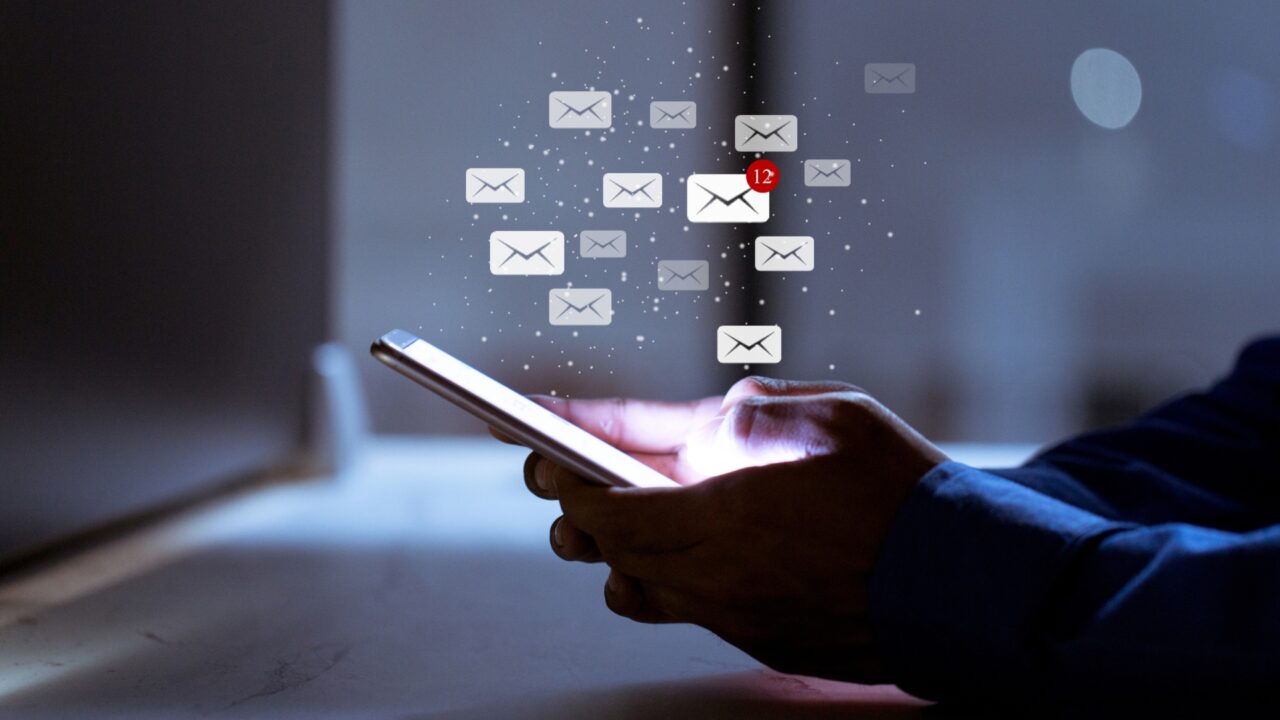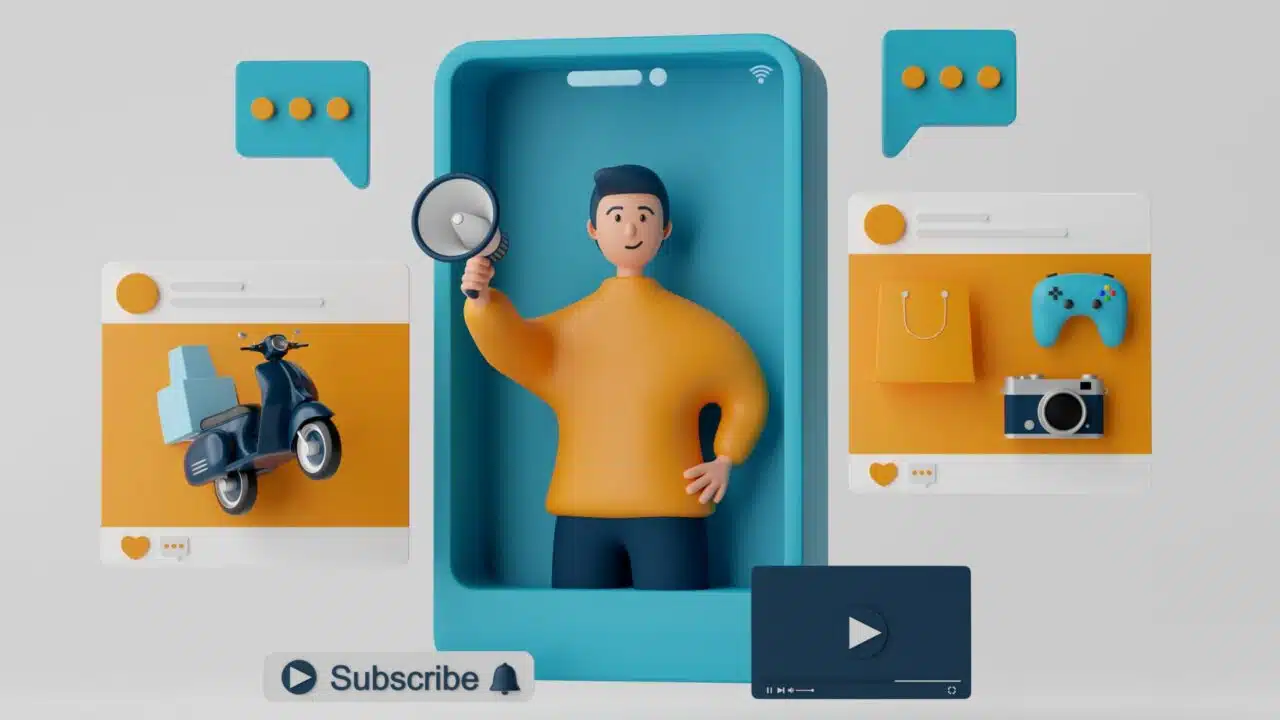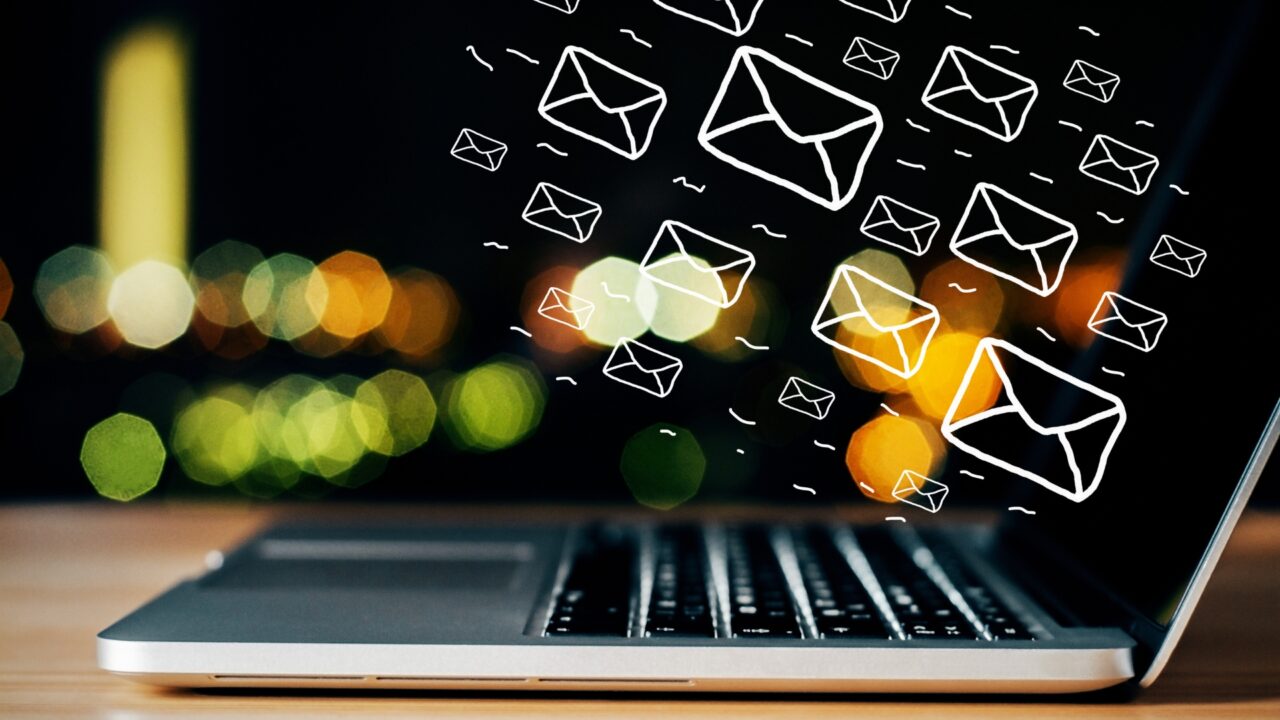Article Summary (TL;DR)
✅ Understand the basics: Learn the fundamentals of email marketing and how they apply to Shopify.
✅ Set up and optimize: Follow a step-by-step guide to create effective email campaigns and track their performance.
✅ Choose the right app: Select a Shopify email marketing app that suits your needs and budget.
The first commercial email was sent in 1978, and email marketing has been around since the 1970s!
Ever since, email marketing has emerged as one of the most effective channels for marketers to cultivate their clientele and produce leads. This makes it even more important to prioritize Shopify email marketing.
Global email traffic was estimated to be sending and receiving 306 billion emails per day in 2020; by 2025, that number is expected to rise to 376 billion!
Furthermore, there are currently almost 4 billion email subscribers worldwide, and that figure is only continuing to rise!
As a result, Shopify email marketing has far more potential than one may imagine!
What’s Shopify Email Marketing?

When you decide to use email marketing as one of your main channels for email campaign promotion, you are using Shopify email marketing.
As soon as potential clients visit your website and consent to receive emails from your company, you can begin this process.
It’s a marketing channel where you can send frequent emails to your email lists without bombarding them, increasing client loyalty and raising awareness.
There are numerous methods for doing successful and productive Shopify email marketing.
This article will teach you all there is to know about Shopify’s email marketing platform and how to best utilize it for healthy Shopify email marketing.
Utilizing this comprehensive Shopify email marketing article, you’ll discover how to:
- Boost the amount of leads you generate.
- Boost your conversion, click-through, and open rates.
- Send customized automated emails with Shopify and much more…
Why Email Marketing is Crucial for Shopify Stores

In the field of marketing, this subject is debated a lot to the point that it is taken for granted!
Because email marketing is direct, affordable, and personal, it is essential for owners of Shopify stores as well as other e-commerce businesses. And that’s it! It is easy to understand.
Do you still believe it is not that significant? Allow me to elaborate on why it is so important!
It’s Personal
Unlike social media marketing, Shopify email marketing enables you to communicate with anyone straight through their inbox.
Additionally, it conveys the idea that the company is always communicating with them and hasn’t forgotten about them.
You may write anything as basic as “Hey there! Love, happy birthday!
This email is still regarded as important since it helps your brand remember its birthday and enhances audience engagement and brand image.
It’s Reasonably Priced
The affordability of email marketing is the next best thing, though. Most email marketing programs offer a free trial that lasts for a set amount of time.
In addition to assisting you in becoming familiar with its features, you can start sending emails straight away to broaden your audience and boost return on investment.
Additionally, their prices remain lower than those of other marketing platforms even after your free trial expires!
Lastly, email marketing offers the best return on investment (ROI) at 44 dollars for every dollar invested!
It’s Right on Target
If you want to communicate directly with your target audience, email is your best option.
How?
It’s because the majority of email marketing software has quite potent segmentation features.
By using segmentation, you may send recipients emails that they genuinely want to receive and prevent spamming. For this reason, 64% of customers say they prefer emails to other forms of contact.
It is assumed that someone wants to hear from you if they have signed up for your emails.
This is the point at which you should maximize your Shopify email marketing tactics in order to maximize subscriber retention.
By providing accurate information and incentives to your subscribers, you will earn their confidence and turn them into brand ambassadors.
It’s Reliable
Although social media marketing offers a lot of potential for success, there is also a significant risk involved.
The majority of social networking sites frequently alter their algorithms, which may have an impact on your reach and occasionally cause you to lose followers quickly.
However, with email marketing, you don’t have to worry about any such algorithm.
More specifically, you are not at the whim of outside gatekeepers. You have the power to use the contacts on your own contact list to your benefit. Because of this, Shopify email marketing is dependable.
It’s Based on Data
The performance statistics of your email campaigns is available to you through the Shopify email marketing app. You may view the open, click-through, conversion, and unsubscribe rates, for instance.
Utilize these statistics to consistently enhance marketing success!
Do you see, for example, a lower open rate? Use A/B testing to improve the subject lines of your emails. Is the click-through rate of the page low? Focus on making your CTAs unique.
Do you observe a low rate of conversion? Make improvements to your landing pages’ effectiveness. Is there a high rate of unsubscribes? Examine how often you send emails.
How to Build a Shopify Email Marketing Campaign

To create a Shopify email marketing campaign, you can opt to use a built-in Shopify Email app or a third-party Shopify email marketing app.
With Shopify Email, you can create, send, and keep track email marketing campaigns w/in Shopify.
To build an email marketing campaign in Shopify Email:
- Setup Shopify Email
- Create & import email list(s)
- Segment your customers
- Choose the Shopify email marketing template(s)
- Customize the template
- Test & launch the campaign
Let’s breakdown these steps in detail.
Step 1: Setup Shopify Email
To build a Shopify email marketing campaign, go to Shopify Admin ->’Marketing’. Select ‘Create Campaign’ -> ‘Shopify Email’.
Things you’ll need to set up email marketing on Shopify:
- An active Shopify account and a plan.
- The Shopify Email app needs to be installed on your account.
Step 2: Create & import email list(s)
Importing your email lists is the initial step in building email marketing on Shopify.
To import your email list, log in to your Shopify account and sync your contacts with your Shopify store. Then in the menu, go to ‘Customers’.
You can import all of your data/customers by uploading a CSV file, or you can add it manually by filling out the required details.
Step 3: Segment your customers
Segments are discrete client groups that are classified according to several factors, such as frequency of purchases, average order value, and product purchases.
By keeping your clients’ distinct attributes in mind, you can target them with individualized, relevant Shopify automated emails by segmenting your customer base.
Customers respond better to personalized emails, and happy customers are more likely to convert.
Click “Segments” beneath the “Customers” option to start creating segments.
Based on the client data you submitted, you can choose from among the categories that Shopify already has available, or you can create your own.
There are two methods for starting a new segment: selecting a template or applying filters.
You can add fields and change the values based on how you divide up your customer base by using the template.
“Filters” are standards or prerequisites that you apply to divide and classify your clientele into more focused groupings.
For instance, you can use filters to put clients in a segment that has bought a particular product together.
🗣️ Pro Tip: New clients who meet the requirements will be automatically added to the customer segment after it has been created.
It’s time to create and design the emails now that the Shopify email campaign setup is complete and we have categorized and identified the recipients.
Step 4: Choose the Shopify email marketing template
In this step, you can choose a template based on what type of marketing emails you want to send.
Click “Create campaign” under “Marketing” in Shopify to select the email marketing template.
Selecting the marketing channel will be required of you. You can install email marketing software from the Shopify shop or use the Shopify Email app within the Email section.
Let’s stay with Shopify Email for the time being.
You may choose from a wide variety of email marketing themes in Shopify Email, including newsletters, promotions, and product highlights.
Moreover, you can design your own unique email themes.
Let’s select the “Announcements” section and the Back-in-stock email template.
Step 5: Shopify email template customization
Before moving on to customizing the content of the email, you have to select which of your customers or segments should receive the email.
Here, you can select the customer segments you’ve already created.
In this instance, a section made with the “Products viewed” filter can be chosen.
Next, you need to input the preview text, the “from” address, and the subject lines.
We’ll now discuss how to customize the Shopify email template and its components, including the footer, background color, font style, and product photos.
To alter an element, you must first choose it. Then, a sidebar containing all of the email template customization options will show up.
🗣️ Pro Tip: With Shopify, you can create personalized email campaigns and modify every aspect of your email.
Step 6: Test & launch Shopify email marketing campaign
Before sending the Shopify marketing emails, you have to test the email.
If you would like to receive the test email, enter your email address. You can send your Shopify marketing emails if everything looks as you had expected.
Here’s how to use Shopify’s built-in capability to build email marketing. The possibilities for creating and altering customized emails are few, and the process of using them is also very laborious.
The email marketing app is useful in this situation.
With an email marketing app for Shopify, you can easily automate, segment, and tailor your email campaigns and start high-converting Shopify email marketing.
Below we’ve curated our top three Shopify email marketing apps.
Top 3 Shopify Email Marketing Apps
Omnisend
Multi-channel supplier Omnisend easily takes the top spot on our list thanks to its strong emphasis on e-commerce.
One of the best tools for ecommerce marketing automation, this slick tool offers a variety of automated workflows targeted at different stages of the customer journey (browse abandonment, cart abandonment, order confirmations, etc.), along with some really cool email features like gift boxes, scratch cards, review requests, and other incentives.
With Omnisend, you can send WhatsApp messages, SMSs, and push alerts in addition to emails. Additionally, you may publish your email campaigns directly on your company’s Facebook page!
What We Liked About Omnisend
We liked how simple it is to integrate Shopify. If you’re not using a third-party template, you can create a sign-up form in Shopify that connects automatically to your store – all you have to do is add some code to your website.
You can also automatically add items from your store directly into emails using the email editor.
Furthermore, only Omnisend offers conversion-focused elements like scratch cards, gift boxes, and “wheel of fortune” signup forms; we haven’t really seen anything like from any other service.
An important benefit of the free plan is that it allows you to contact an unlimited number of subscribers (albeit you can only contact 250 every month).
Additionally, Omnisend makes it incredibly simple to ask for and show client evaluations in your emails and on your Shopify website.
This feature allows you to program an automated message to be sent out asking for reviews by text or email following a purchase made from your business.
You can also establish review-based segments in Omnisend, which enables you to automatically send thank-you notes to customers who leave favorable reviews or follow-up emails to customers who write poor reviews.
GetResponse
GetResponse is a formidable supplier of marketing automation that goes above and beyond the typical email marketing solution. It accomplishes this by providing tools like webinars, CRMs, and landing sites.
Because of its Deep Data integration, which enables synchronized customer, order, and product data, sophisticated segmentation and tagging, and automated campaigns, it also happens to be one of the top solutions for Shopify email marketing.
Its cart abandonment solution is much more sophisticated than most, enabling you to track the precise locations of user cart abandonment throughout their journey.
What We Liked About GetResponse
For the purpose of creating automations for your store, such as abandoned cart campaigns, post-purchase emails, and sales promos, GetResponse provides a large selection of convenient, pre-built templates. GetResponse now provides suggestions for AI products.
This implies that recommendations are made based on an analysis of the behavior, tastes, needs, and habits of the people who visit your website.
Without leaving the editor, you may incorporate these straight into your newsletter or automation.
ActiveCampaign
In the field of marketing automation, ActiveCampaign has established a strong reputation. Because of its deep data integration with Shopify, owners of Shopify stores may now access this.
Store owners can benefit from features like conditional email content (different items and offers based on what a contact is interested in), dynamic segments and tagging, Active Campaign’s CRM add-on, and, of course, advanced automations.
There are further integration choices (Revenue Conduit, Zapier).
What We Liked About ActiveCampaign
All contacts who make a purchase or abandon a basket in your store will be automatically added as a contact in ActiveCampaign.
The Deep Data integration process was simple and painless.
The ability to examine contacts’ orders, abandoned carts, and spending totals directly within their contact profiles is fantastic; it provides a perspective similar to what is typically found in more specifically designed CRMs.
We also adore the workflow-based automation editor offered by ActiveCampaign, which enables you to create campaigns for abandoned carts, emails with upsells, repurchase reminders, requests for product reviews, and much more.
Using the drag and drop editor, adding products to email templates is easy. You can also add a “Buy Now” button and your Shopify products to your ActiveCampaign landing page.
Instead of copying and pasting a form into the code for your store, you can have it automatically included on your website.
A discount coupon may be included on this form to entice customers to buy.
🗣️ Pro Tip: To further boost your your sales, you can combine your Shopify email marketing with the best review apps.
Six Shopify Email Marketing Campaigns That Convert Well

The impact of your Shopify email marketing is determined by two factors: relevancy and timing. These two complement each other.
Knowing what kind of emails to send and when to send them is essential for success.
By examining instances of successful Shopify email marketing, let’s learn about both.
Welcome E-mail
The first point of contact and impression you make with a consumer is through your Shopify welcome email.
Send the following upon a customer’s initial purchase or email sign-up.
Among all the marketing emails you will see here, welcome emails have the greatest open rate, which is rather astounding.
It suggests that clients anticipate receiving your welcome message and are curious in what you have to say.
Create a compelling one, then.
Abandoned Cart E-mail
The secret to dealing with abandoned carts, every Shopify owner’s worst nightmare, is to use Shopify abandoned cart emails.
We’re aware that changing the course is challenging, however…
Carts that have been abandoned are not insurmountable. You can get them back by reminding customers via Shopify cart reminder emails to complete their purchases.
Additionally, the Shopify abandoned cart emails work better than alternative ways to retrieve abandoned carts. It has a 30% open rate, of which 11% result in cart recovery.
Referral E-mail
It’s time to convert new consumers who have made recurring purchases into brand ambassadors by offering them referral emails as a means of encouragement.
During this phase of email marketing, your clients will start to relate to your brand on a deeper level.
After-Purchase E-mail
Any email you send a customer after they make a transaction on Shopify is known as a “Shopify post-purchase email.” Its goal is to communicate constantly with clients in order to nurture and maintain them.
Order confirmation and delivery information emails are two examples of transactional post-purchase emails. Additional emails include ones that ask for feedback, express gratitude, provide education, and promote cross-selling.
Promotional E-mail
The mainstay of email marketing is the promotional email. Here’s where you can promote your brand, highlight new items and deals, and make product recommendations.
Crafting compelling Shopify marketing emails will assist you in positioning your company and promoting your latest products.
Re-engagement E-mail
Some clients continue, while others stop. However, you may still re-engage them by sending a Shopify win-back email to them if they haven’t interacted with you for more than 90 days.
How Do I Create an E-mail List on Shopify?

By offering prospective clients a strong incentive to join your list and obtaining their email addresses, you can create a Shopify email list.
Here are several growth tactics to help you develop your email list on Shopify:
Make Forms for Opt-in
By using opt-in forms, users can freely provide their email addresses in exchange for valuable offers, such as discounts, information, or access to special material.
These could be sidebar forms or popups. Make sure they are easy to see and complete.
You should strategically place your opt-in offers on your homepage, in blog sections, at the checkout, and in the footer of your website.
Provide Rewards
Provide a strong incentive for prospective subscribers to join your list. This might be an early access to sales, a freebie, an exclusive e-book, or a discount code.
Make sure the offer is made apparent on your landing pages and sign-up forms when applying these incentives.
Engage via Content Marketing
Provide helpful content that requires an email sign-up to access, like blog entries, guides, or e-books. By doing this, you establish credibility for your store and foster a bond with your customers.
Create a Landing Page that Converts Well
Make specific landing pages just for registering emails. You can link to these pages from sponsored advertisements, guest blog articles, and social media profiles.
The advantages of joining your email list subscription should be made very evident on the landing page.
Make Use of Lead Magnets
In essence, a lead magnet is a promotion that marketers provide to prospective customers in return for their email addresses.
They are available in a variety of formats, including free trials, webinars, whitepapers, e-books, discount codes, and any type of special material.
Final Thoughts
Email marketing remains a powerful tool for Shopify store owners, offering a direct and personal way to connect with customers.
As we’ve explored in this comprehensive guide, implementing effective email marketing strategies can significantly boost your Shopify business:
- Understand the Basics: Familiarize yourself with email marketing fundamentals and how they apply specifically to Shopify.
- Choose the Right Tools: Select a Shopify email marketing app that aligns with your needs and budget. Whether you opt for Shopify’s built-in email functionality or third-party apps like Omnisend, GetResponse, or ActiveCampaign, ensure it integrates seamlessly with your store.
- Build Your List: Focus on growing your email list through strategic opt-in forms, compelling lead magnets, and valuable content marketing.
- Segment and Personalize: Leverage customer data to create targeted segments and personalize your email campaigns for maximum impact.
- Craft Compelling Campaigns: From welcome emails to abandoned cart reminders, create a variety of email campaigns that engage customers throughout their journey.
- Optimize and Analyze: Continuously test and refine your email strategies based on performance metrics to improve open rates, click-through rates, and conversions.
- Stay Compliant: Always adhere to email marketing best practices and regulations to maintain trust with your subscribers.
By implementing these strategies and continuously refining your approach, you can harness the full potential of email marketing to drive growth for your Shopify store.
🗣️ Pro Tip: Remember, successful email marketing is about building relationships, providing value, and strategically guiding customers towards conversion.
With persistence and creativity, your Shopify email marketing efforts can become a cornerstone of your e-commerce success.
Comments
Related Posts
Mastering Shopify’s UTMs: The Simple Way to Smarter Marketing
Let’s be honest: marketing your Shopify store without tracking what’s…

10 Profitable Product Categories for Amazon Affiliates 2025
What you’ll learn Amazon is a favorite for experienced and…

Unlock the Secret to a Profitable Automated Amazon Store: How to Build a Hands-Free Income Stream
Ever dreamed of running a profitable Amazon business while sipping…







Leave a Reply